In a world of compromising SUVs, the 4Runner has stayed true to its purpose. We consider the best updates of the exceptional off-roader.
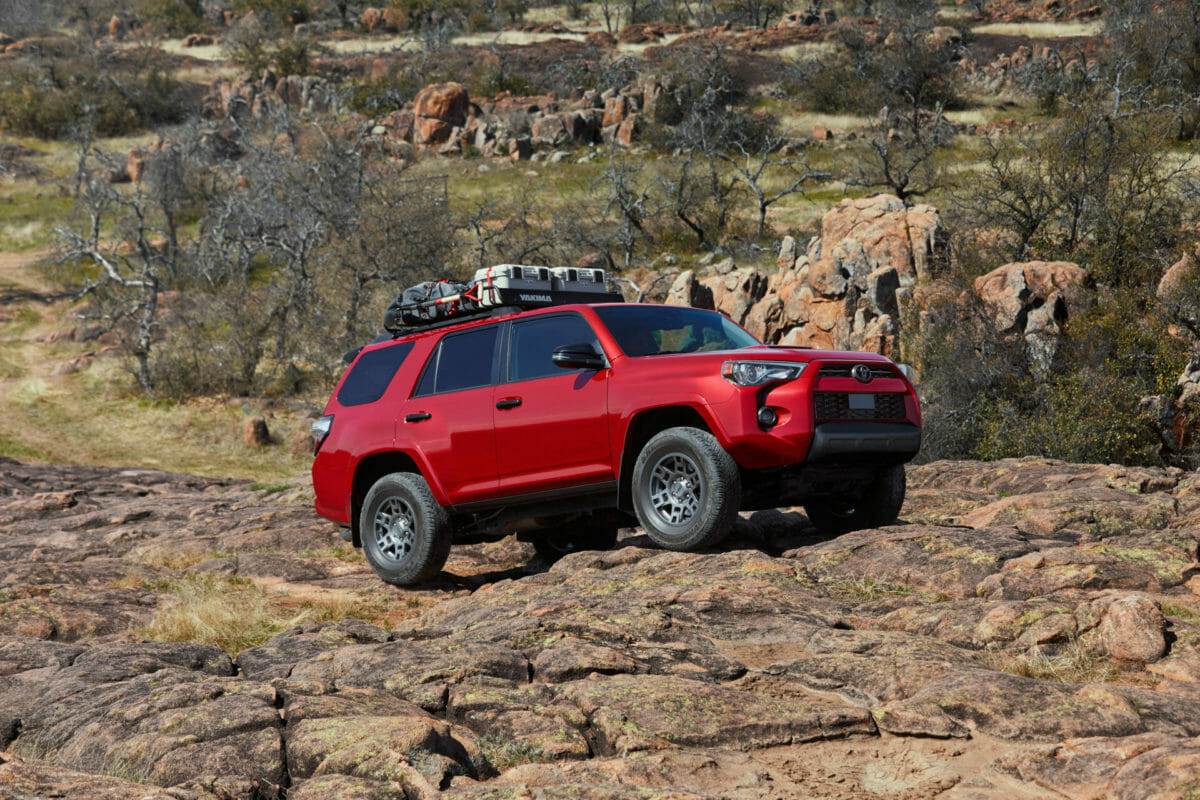
The Toyota 4Runner has been around for over 35 years and has done something that is rare in the car scene: stick to its roots. However, the 4Runner’s legacy really began in 1981 with the Trekker, which essentially was a Toyota pickup with a bed cap added. The only difference was that the Trekker would be assembled with the help of Winnebago, while the 4Runner would not.
Whereas other vehicles have adopted the trends that are common in their category, the 4Runner’s purpose has remained solid. Its purpose is to remain fully capable when taken the road less traveled, whereas its car-based competitors cannot say the same.
Time and time again, rugged vehicles have shifted from their initial purpose of being a capable off-roader to a soft, road-going machine. Take the Toyota RAV4, Honda CR-V, or the Subaru Forester for example.
The Toyota 4Runner has been a bonafide adventure SUV since the original rolled out in 1984. The popular vehicle entered 2021 with a new Trail Special Edition, several TRD Pro enhancements, and new LED headlights across the lineup.
Now, that we’ve confirmed some of the awesome aspects of the Toyota 4Runner, how do you choose the best model year from the lineup of a vehicle that has maintained a solid reputation since its debut?
We’ve done some recent research on one of our all-time favorite Toyota vehicles to provide some insight for car buyers who may be looking to get behind the wheel of a new or pre-owned Toyota 4Runner.
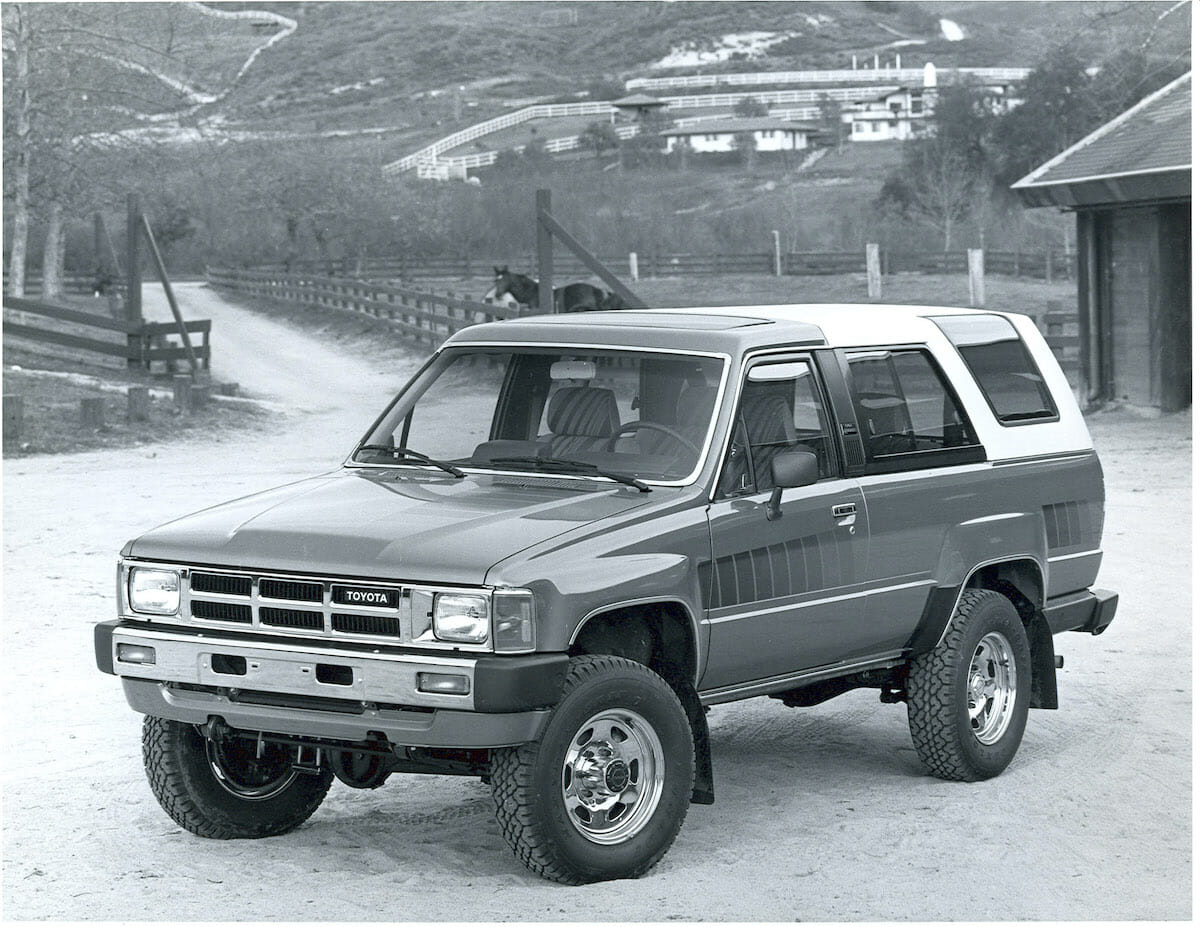
First-generation 4Runner (1984-1989)
The first-generation Toyota 4Runner hit showrooms for the 1984 model year. However, it is hard to say that it was a new vehicle for the Toyota lineup. This is because it was “heavily influenced” by the Toyota Pickup (yes, that’s really its name). However, I believe I say heavily influenced too conservatively.
The 4Runner was almost literally a Toyota Pickup with a camper shell dropped onto the back and rear seats tossed in the back. To distinguish the 4Runner from a Pickup with a cap, the 4Runner boasted a retractable rear windshield that would drop down into the tailgate.
All 4Runners were built on the Pickup’s two-door, short-bed platform. They featured a removable top and sported a 2.4L I4 engine that produced less than 100 hp. Also offered were a 2.4L I4 turbo and 3.0L V6, each produced 135 and 150 hp, respectively. These engines came standard with a five-speed manual or four-speed automatic transmission.
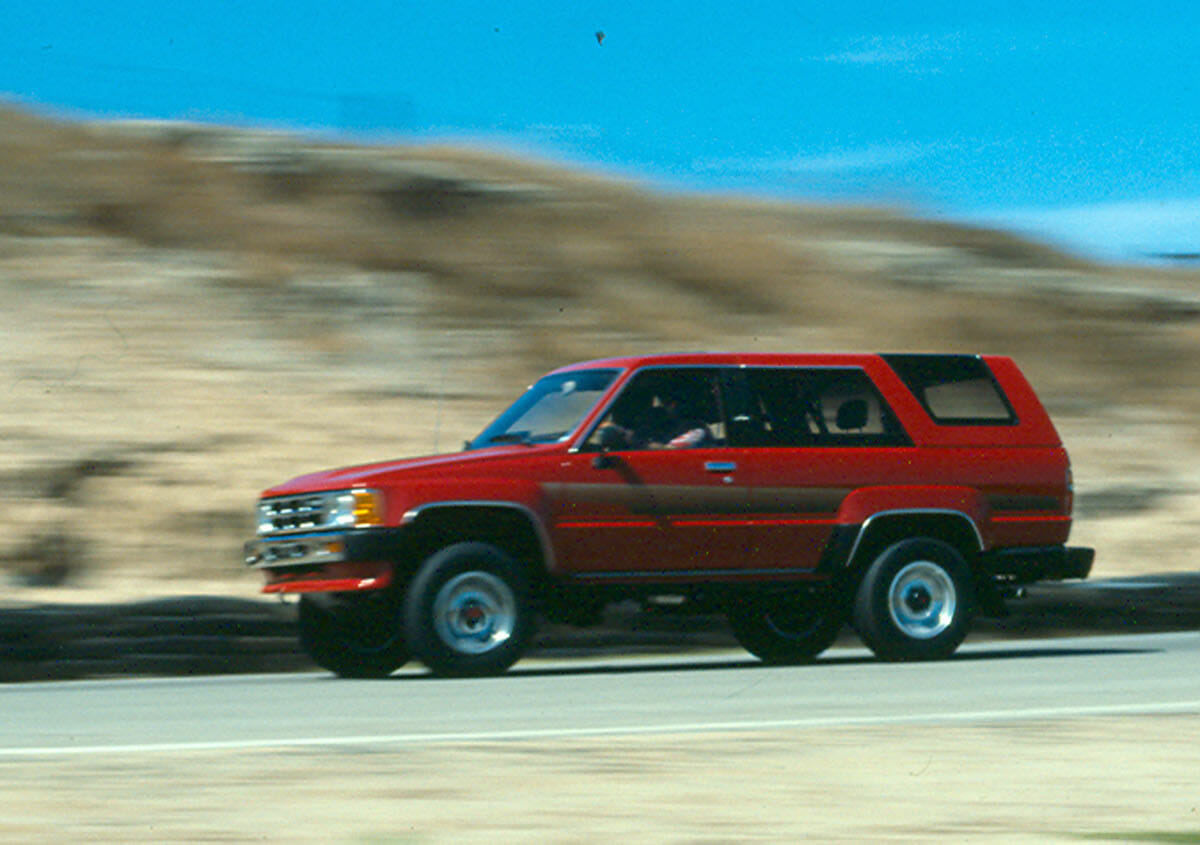
First-gen. 4Runner: Problem Areas
There are not many complaints on the NHTSA for the original 4Runner. However, one of the most common problems was a sagging suspension. This is due to Toyota failing to upgrade the rear springs when converting the Pickup to a Highlander.
Also, while the 2.4L I4 engine was very reliable, the same cannot be said about the 3.0L V6 as it had some dependability issues. Since it is an old vehicle, common problems include rust, worn-out parts, and leaks of all varieties.
Also, demand for the first generation is very high as many consider it an admirable off-roader. However, since there were few made, you can expect to pay high prices for the original 4Runner.
There are also problems to consider if you plan on buying the 4Runner as an off-roading vehicle. Believe it or not, the 2.4L I4 engine that produces around 100 hp will not get the job done in extreme off-roading scenarios. This is not good news considering the turbo edition is ultra-rare and the V6 is unreliable. Also, both optional engines came with an upgraded, heavy-duty rear-differential.
Despite that, they come with an “upgraded” transmission and chain-driven transfer case.
While the chain-driven transfer case is quieter on the road, it is worse at off-roading than the standard gear-driven transfer case found in the four-banger.
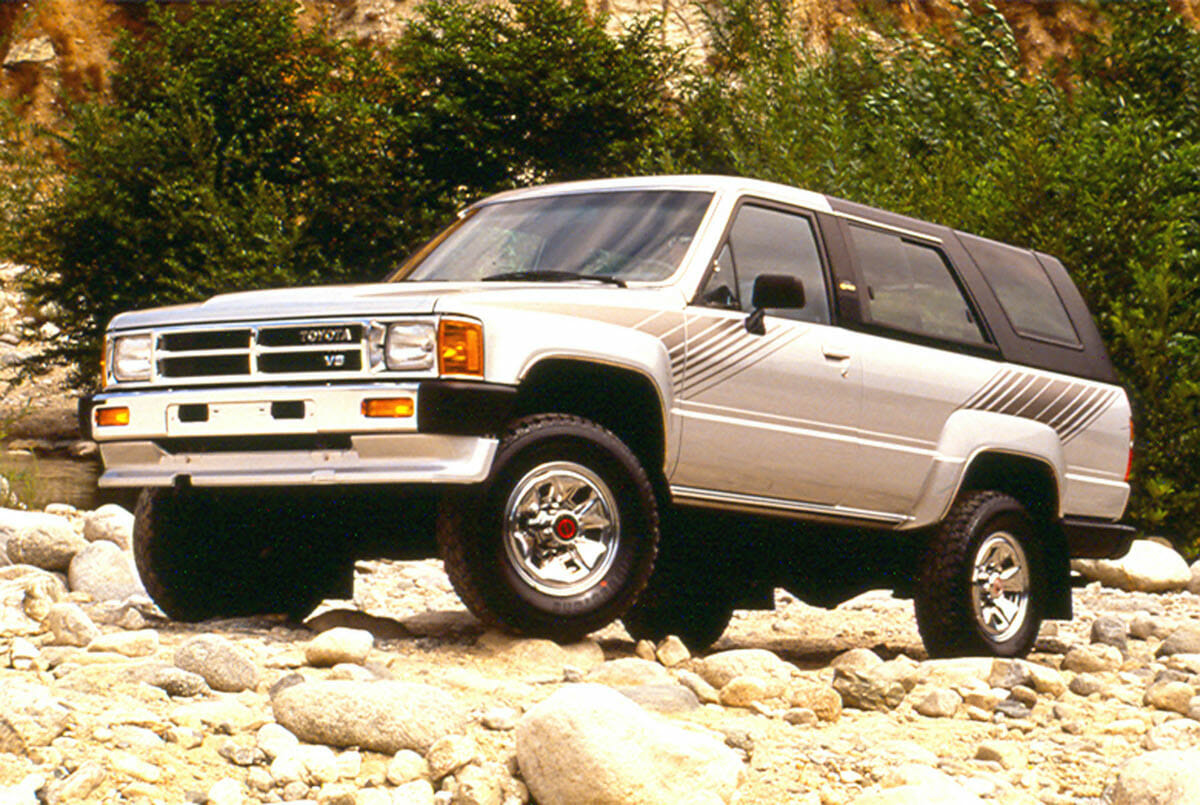
First-gen. 4Runner Yearly Updates
- 1985 – Electronic fuel injection (EFI) was offered to buyers. Also, rear seats were made optional for all trims, no longer being reserved for the high-class SR5.
- 1986 – To make the 4Runner more comfortable on the road, the solid front-axle was replaced by a new independent front suspension. This was highly controversial, as it made the 4Runner less off-road capable. Thus, why the previous model years are more valuable. Also, new body-colored tops could now be purchased. Furthermore, the exceedingly rare turbocharged engine was made available this year. Almost all of the turbocharged 4Runners featured a four-speed automatic transmission.
- 1988 – New for 1988, the 3.0L V6 engine was offered.
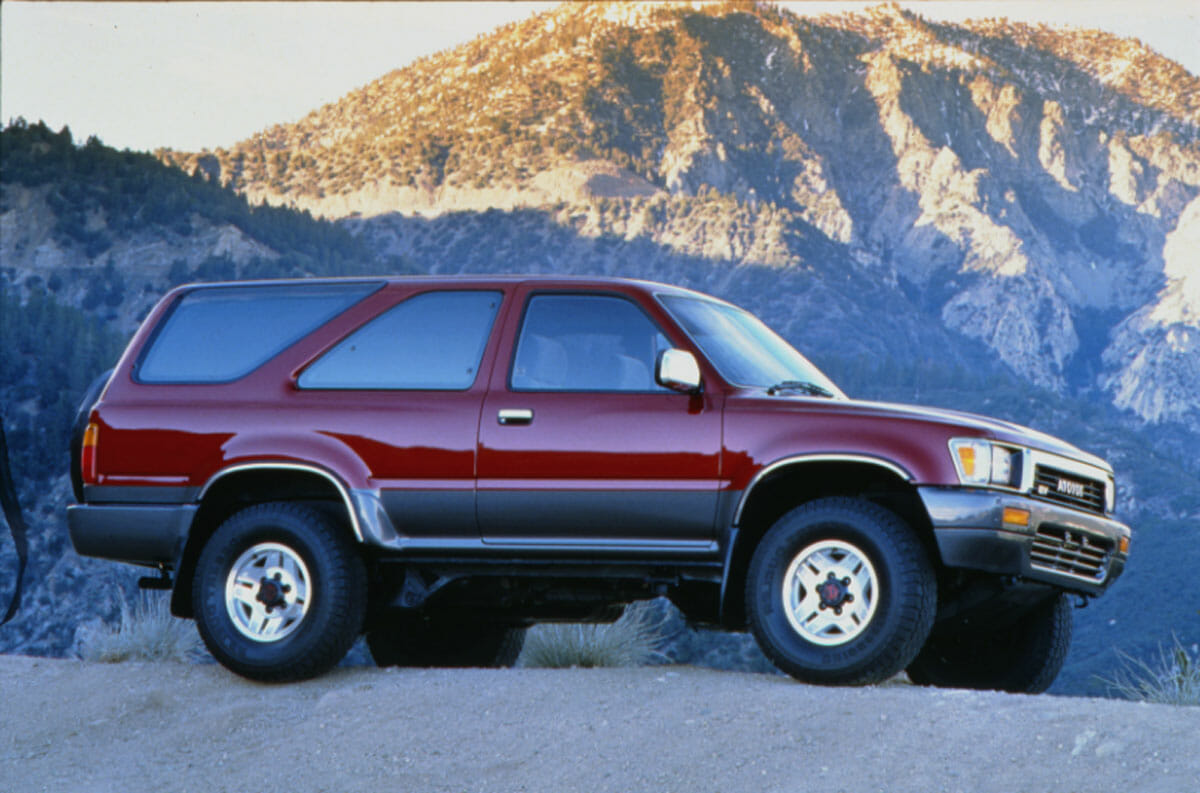
Second-generation 4Runner (1990-1995)
The second-generation Toyota 4Runner was released for the 1990 model year. Although it was a new generation of 4Runner, it seemed very similar to the old one. For example, from the B-pillars forward the 4Runner was almost completely identical to the Pickup.
Despite a new coil-spring rear suspension, the second generation also suffered from the same “saggy bottom syndrome” as the last one. The 2.4L I4 gear-driven engine remained the standard engine for the 4Runner and the 3.0L V6 chain-driven engine was still offered. Similar to the last generation, although the I4 offered less power it is considered the more reliable of the two.
However, this was the first generation 4Runner to feature a full-steel integrated body that would be mounted on the frame. This is opposed to the old 4Runner which merely had the fiberglass bed cap.
Unfortunately, this means the top could no longer be removed on the 4Runner. It’s worth noting that the turbocharged engine from the previous generation was dropped.
However, most importantly, the second generation could be had in a four-door version, making it more family-friendly.
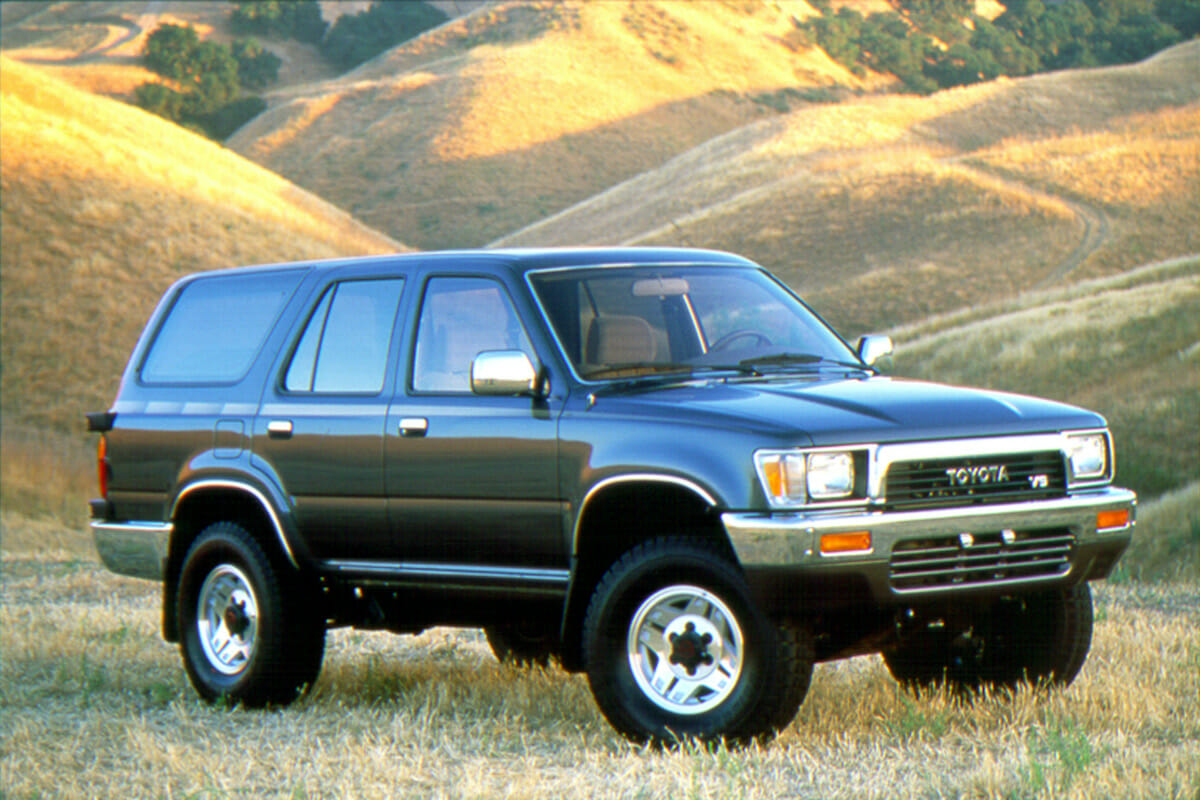
Second-gen. 4Runner: Problem Areas
Due to the low standards for light truck safety in the U.S., it is unsurprising that the second generation was not very safe. When tested by the NHTSA it received one star for driver safety and four stars for passenger safety.
Furthermore, the doors were made of two pieces of sheet metal. Thus, when in a crash the only thing protecting the front occupants was a window and sheet metal, two relatively delicate materials in a crash. Therefore, side-impact beams were added for the 1994 model year.
As for reliability, the V6 engine suffered from failing head gaskets. Other than that, things to look out for are common problems found in older vehicles such as rust, leaks, and of course that saggy suspension.
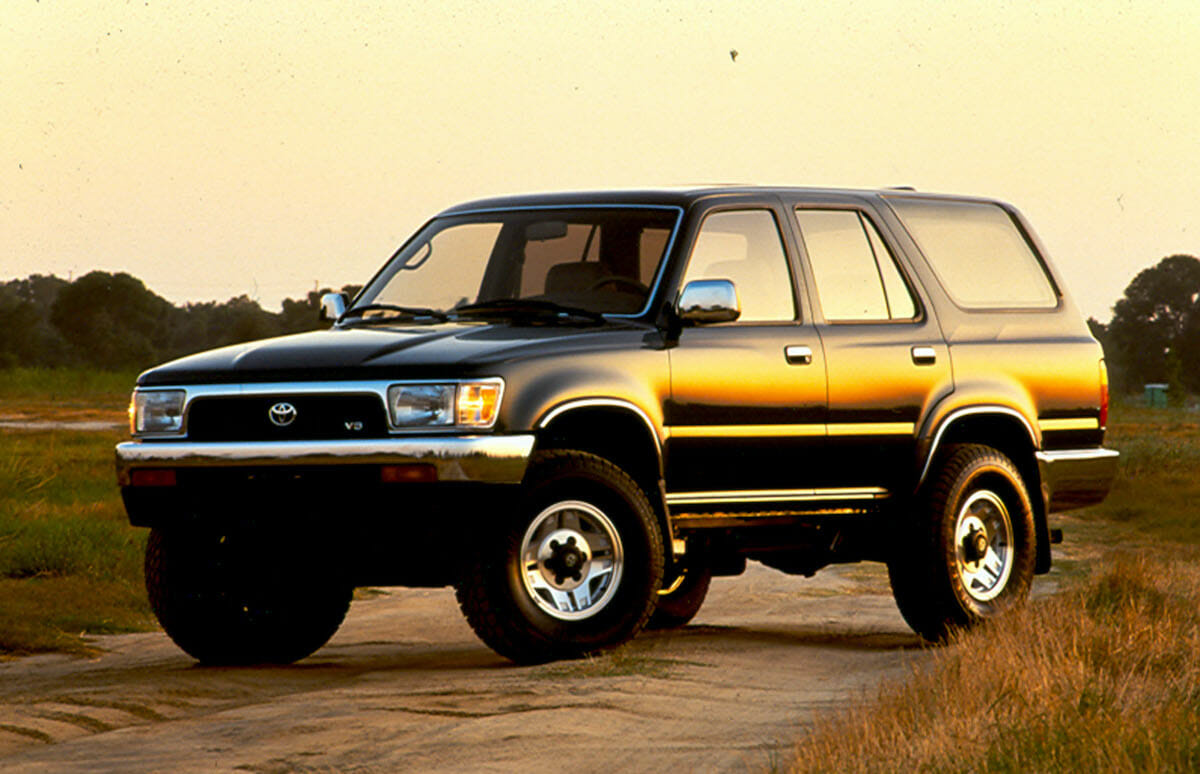
Second-gen. Yearly Updates
- 1992 – Power steering and a rear windshield wiper were made standard on all 4Runners. Also, the 4Runner received minor styling tweaks and the rear-mounted spare tire was moved underneath the ute.
- 1993 – The two-door 4Runner was no more. This was because it was cheaper to import the four-door variant. Also, Toyota’s 4WDemand system replaced the standard 4WD. This added shift-on-the-fly capability, meaning you do not have to stop the 4Runner to select 4WD high.
- 1994 – Side impact beams were added to the 4Runner to increase safety.
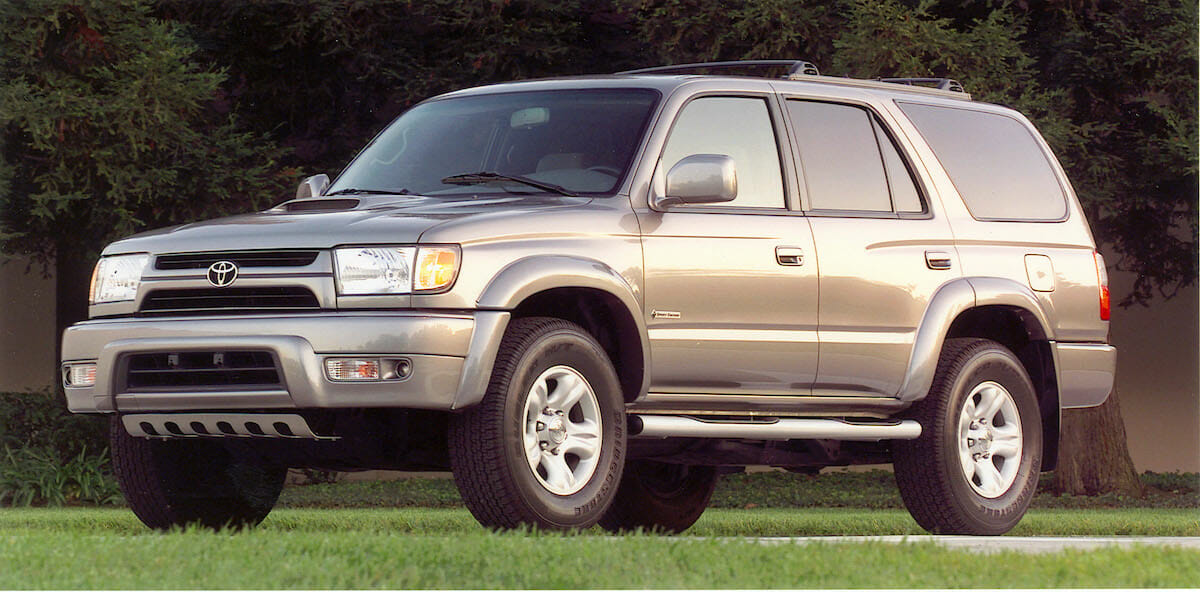
Third-generation 4Runner (1996-2002)
When the third-gen 4Runner arrived in showrooms for the 1996 model year, it brought with it some exciting changes. Although the 4Runner did share some parts with the new Tacoma, it finally had a body and chassis to call its own.
The 4Runner did, however, share the same engines as the Tacoma. A new 150 hp 2.7L I4 was made standard, replacing the antiquated 2.4L I4. Also, a notably more reliable 183 hp 3.4L V6 replaced the untrustworthy 3.0L V6.
Other changes included a larger interior, dual airbags, optional ABS, a lift gate, full coil-spring suspension, rack and pinion steering, and increased aerodynamics. Separating the wheat from the chaff, the third generation decided to stick with its rugged off-road character instead of adopting highway comforts like its adversaries. Plain and simple, this was where the 4Runner made a name for itself.
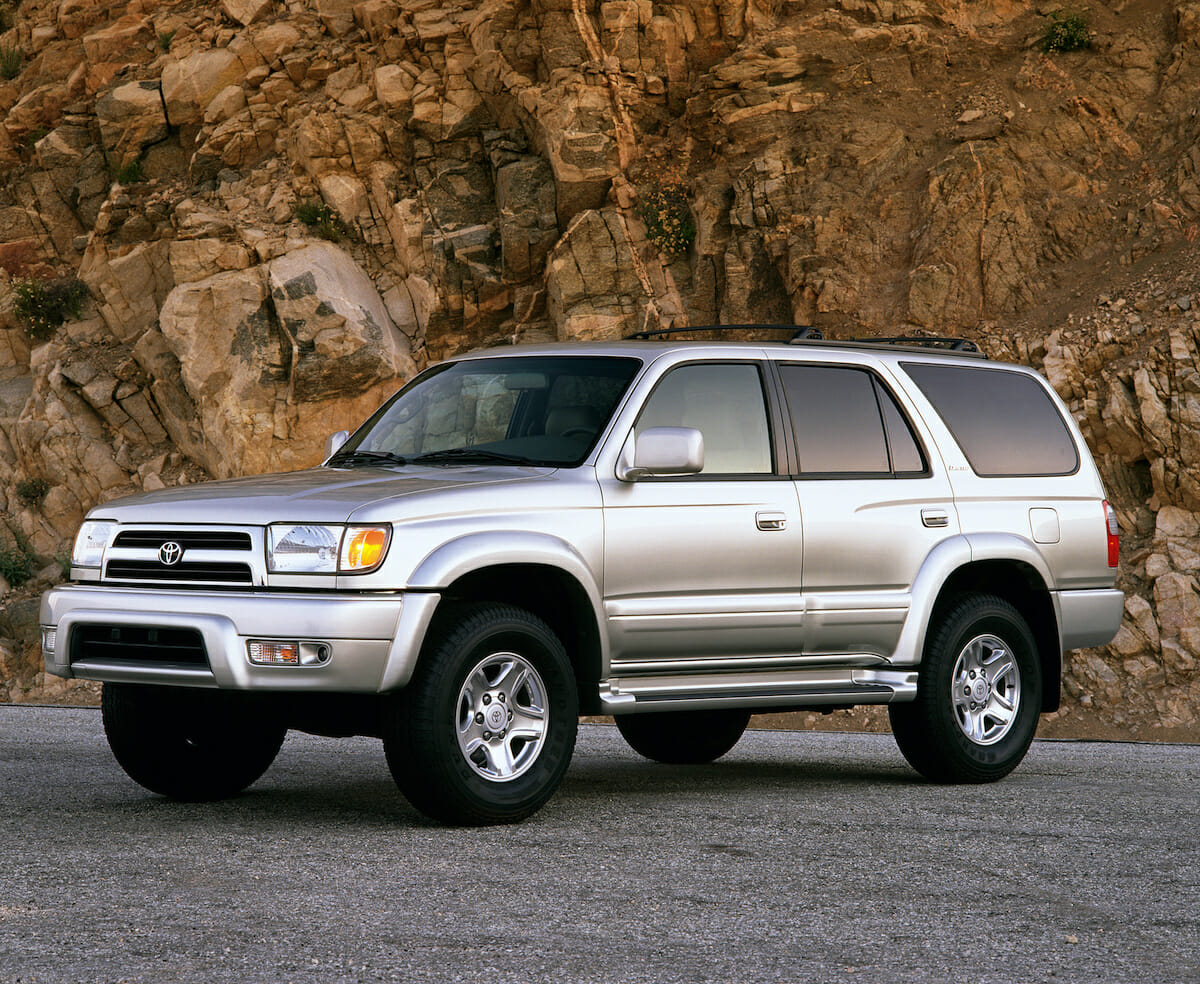
Third-gen. 4Runner Yearly Updates
- 1999 – For the 1999 model year, the exterior and interior were majorly redesigned. Also, the 4WD was upgraded to include a new full-time 4WD mode.
- 2000 – Daytime running lights were added to the ABS package.
- 2001 – In a blow to the off-roading demographic, the manual transmission and locking rear differential were no longer offered. Since the base model was dropped, the 4Runner now came standard with vehicle skid control (VSC), traction control, and enhanced ABS.
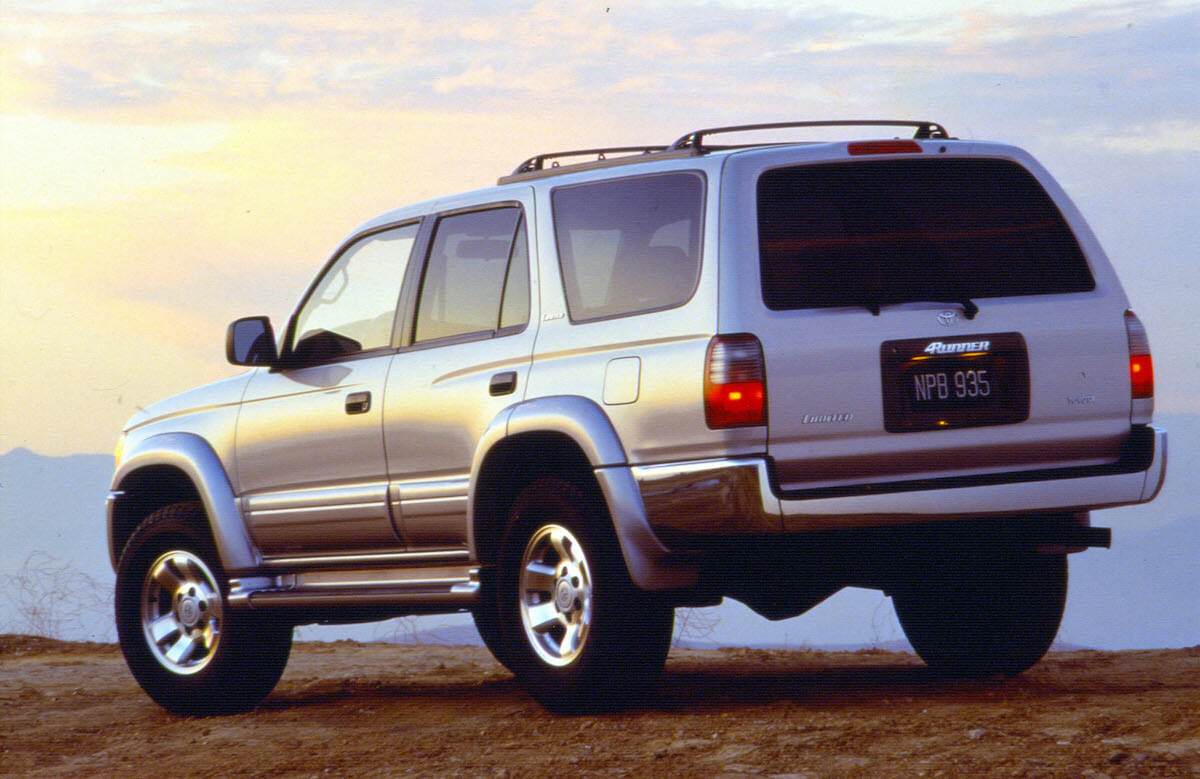
Third-gen. 4Runner: Problem Areas
The third-generation 4Runner was the first of its kind to be tested by the IIHS. Although the previous two generations were unsafe, this was not so for the third generation.
It received an overall mark of acceptable, which was just one step below the top mark of good. In relation to the safety test, the Achilles heel of the 4Runner was its bumpers, which crumpled too easily.
However, when it came to reliability, the 4Runner did not fare as well. It received over 250 complaints on average per model year according to the NHTSA.
Plainly, rust was the most common complaint about the 4Runner. Unfortunately, every model year was affected by excessive rusting. In conclusion, the third-gen 4Runner took two steps forward when it came to safety and one step back when it came to reliability.
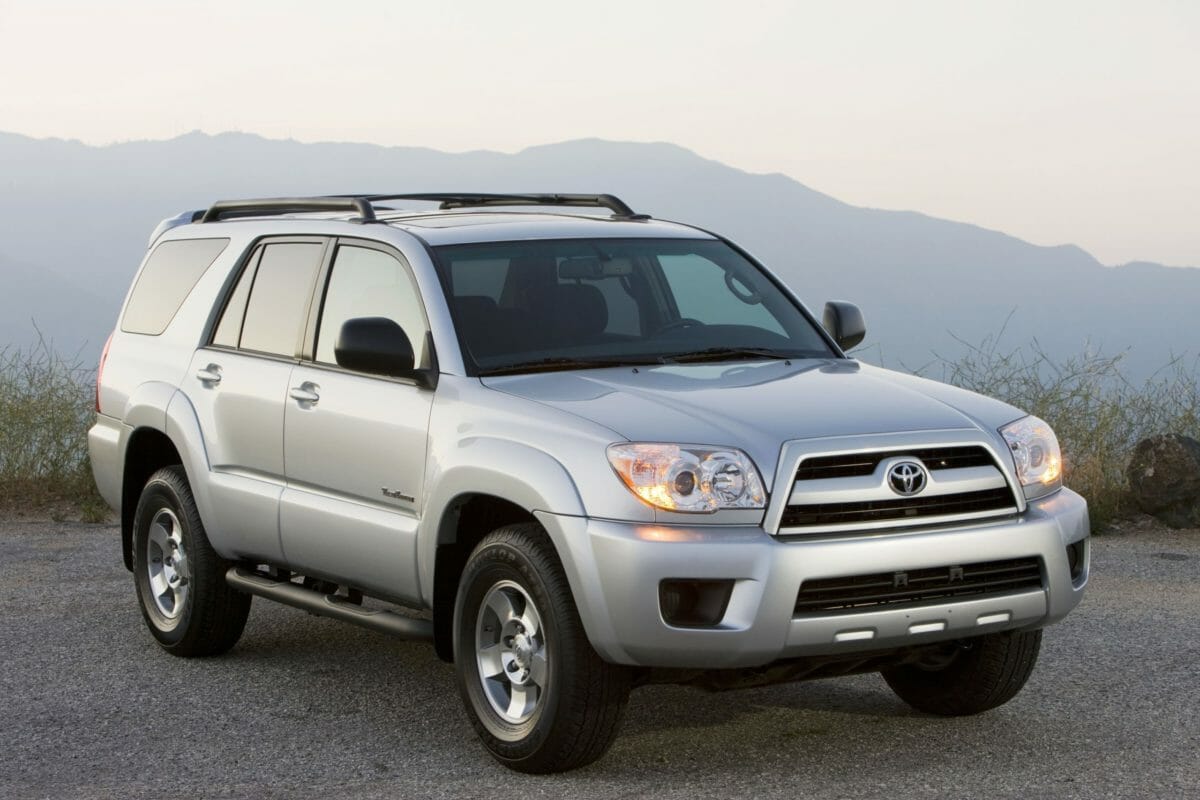
Fourth-generation 4Runner (2003-2009)
The barely recognizable fourth-generation 4Runner hit showrooms for the 2003 model year. The exterior looked more rounded and car-like, as opposed to the previous generations which put off more of a truck vibe.
Also, several creature comforts were added to the 4Runner such as standard tilt and telescoping steering wheel, remote keyless entry, automatic climate control, driver’s lumbar support, and a power rear tailgate window.
Don’t let these upgrades fool you, the 4Runner still maintained a solid off-roading posture. Standard skid plates, body-on-frame construction, and solid rear axles distinguished the 4Runner from its on-road-oriented peers.
The new standard engine was a 245 hp 4.0L V6. A 265 hp V8 was offered on the 4Runner, this is the first and last time a V8 was offered on the 4Runner. Once again, the 4Runner was marketed as an off-road capable mid-size SUV.
Fourth-gen. 4Runner Yearly Updates
- 2004 – Tire pressure monitoring system (TPMS) was made standard on the 4Runner. Also, the SR5 and Limited trims could opt for a third-row seat.
- 2005 – For 2005, the V8 was reworked to find five more horsepower, a five-speed manual transmission was made standard, and a rollover sensor was coupled to the optional curtain airbags.
- 2006 – The 4Runner was restyled and an AUX jack was made standard for all trims. Finally, Toyota revised the head gasket. This marked the end of a long line of Toyota head gasket failures.
- 2008 – Curtain airbags were finally made standard, rather than optional.
Fourth-gen. 4Runner: Problem Areas
The fourth-generation further improved the 4Runners safety. According to the IIHS, the 4Runner received marks of good in all categories except for head restraints and seats. The head restraints and seats scored as low as possible because the dummy would hit its head off the B-pillar which can could a concussion.
Standard torso and side curtain airbags, which were added in 2008 also made the new 4Runner much safer in a crash. However, Toyota’s Star Safety System was the true safety rockstar for the 4Runner, as it could help the driver avoid a crash. This suite of safety equipment included ABS, electronic brakeforce distribution, brake assist, traction control, and VSC.
Reliability for the 4Runner started off rocky but improved in time. The 2003-2007 model years received over 400 complaints on average per model year according to the NHTSA.
Whereas, the 2008-2009 4Runner received a mere 54 per model year. The most common complaint yet again being excessive rust.
However, the 2008-2009 model years do not seem to be affected by this issue. That being said, when purchasing any 4Runner, rust is very important to look for.
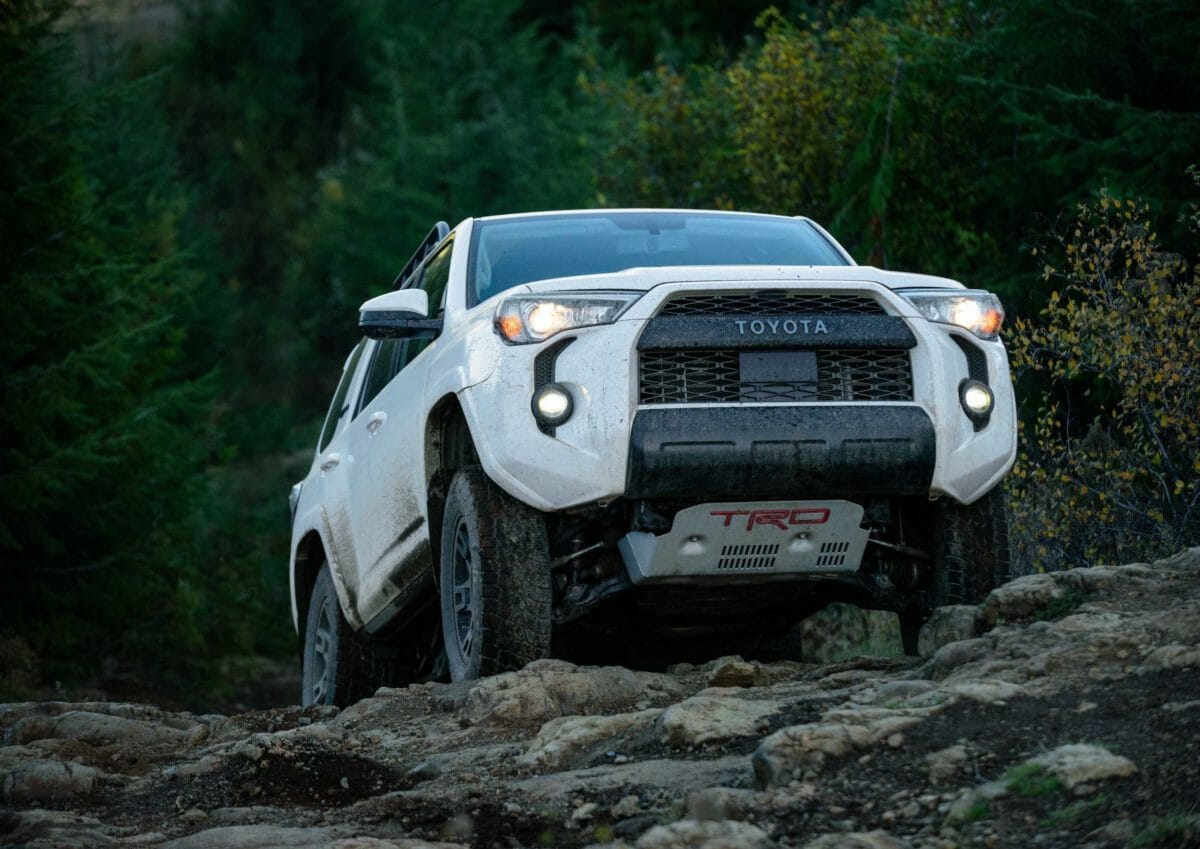
Fifth-generation 4Runner (2010-Present)
The current fifth-generation 4Runner was first released for the 2010 model year. Returning to its roots, the new 4Runner reappeared as the square 4Runner we once knew. The redesigned ute now boasted a new 4.0L V6 with dual variable valve timing with intelligence (VVT-I). This is important because dual VVT-I increases both performance and mpg.
Interestingly, there is an exceedingly rare version of the 2010 MY only 4Runner that was powered by a 2.7L I4 engine mated to a four-speed automatic transmission.
However, nearly all are equipped with the V6 and five-speed automatic transmission. Both the 4Runner and FJ Cruiser are built on the same platform.
For 2017, the 4Runner’s impressive ruggedness got a lift from Toyota Racing Development (TRD). The Trail and Trail Premium grades that debuted in 2015 are now known as the TRD Off-Road and TRD Off-Road Premium. They join the ultimate off-roader in the lineup: the 4Runner TRD Pro.
The 4Runner offers the choice of 2WD, part-time 4WD with a two-speed transfer case, or full-time multi-mode 4WD with a two-speed transfer case and locking center differential.
Through the decades, the 4Runner has grown in both toughness and comfort. Two new upgrades were introduced in 2018: the Wilderness Package and TRD Enhancement Package.
The Wilderness Package – available for the SR5, SR5 Premium, TRD Off-Road and TRD Off-Road Premium grades – equiped 4Runner with roof rack crossbars, all-weather floor liners, and a cargo tray.
The TRD Enhancement Package, available for the TRD grades, added TRD 17-inch matte gray alloy wheels and a TRD-stamped aluminum front skid plate.
For 2019, the 4Runner gained in both the looks and the capability departments thanks to two new offerings. The new Nightshade Special Edition offered Limited buyers a sleek, sporty package accented with black features that included 20-inch black wheels; black bumper and grille accents; and black interior trim on the steering wheel, center cluster, console panels, and shifter.
The 2019 Toyota 4Runner TRD Pro featured some significant changes, the most noticeable being an all-new suspension package that included 2.5-inch Fox Internal Bypass Shocks for impressive off-road performance and handling. 4Runner TRD Pro also gained a TRD Roof Rack, standard JBL Premium Audio and moonroof, and an updated front skid plate with red TRD lettering.
For 2020, the 4Runner makes Toyota Safety Sense P standard on all grades. The advanced suite of driver-assist technologies includes Pre-Collision System with Pedestrian Detection, Lane Departure Alert with Sway Warning System, Automatic High Beams, and High-Speed Dynamic Radar Cruise Control.
With room for up to seven, the fifth-generation 4Runner is the most capable of its line. For 2020, all grades debut a new instrument panel design along with a high-resolution eight-inch touchscreen display for the Audio, Audio Plus, and Premium Audio systems.
Fifth-gen. 4Runner Yearly Updates
- 2011 – The inadequate four-cylinder engine was dropped from the lineup.
- 2014 – Cosmetically, the 4Runner received major changes, both inside and out. Also, Toyota added a backup camera and their Entune connectivity suite to the list of standard equipment.
- 2015 – The expensive TRD Pro trim was added. The TRD Pro trim brought with it Bilstein shocks, TRD front springs, and a TRD front skid plate.
- 2017 – The Trail and Trail Premium trims were renamed the TRD Off-Road and TRD Off-Road Premium trims, respectively.
- 2020 – Toyota made their driving assist suite, Safety Sense P standard on all 4Runners. The Entune 3.0 infotainment system was also made standard on all models. Entune 3.0 includes Apple CarPlay/Android Auto compatibility, Amazon Alexa integration, and Wi-Fi capability.
Fifth-gen. 4Runner: Problem Areas
Continuing the trend of the previous generations, the new 4Runner is the safest yet. For the 2010-2012 model years, it received a good in all categories except for roof strength.
However, Toyota strengthened the roof for the 2013 model year, earning it a Top Safety Pick. For the 2014-Present model year, the 4Runner was held back by a marginal score in the driver-side small overlap test and a mark of poor in the headlight test. However, it is worth noting that Toyota’s Safety Sense P is now standard on all trims, making them much safer.
Toyota seems to have finally nailed down the reliability of their off-roading SUV. According to the NHTSA, the 4Runner received just over 50 complaints on average per model year. The most common complaint for the 2010-2013 model years was the airbags.
However, there is little cause for concern since they have been recalled by Takata. The most common problem for the 2014-2016 model years is failing door lock actuators. From 2017-present, there have been no common problems reported thus far.
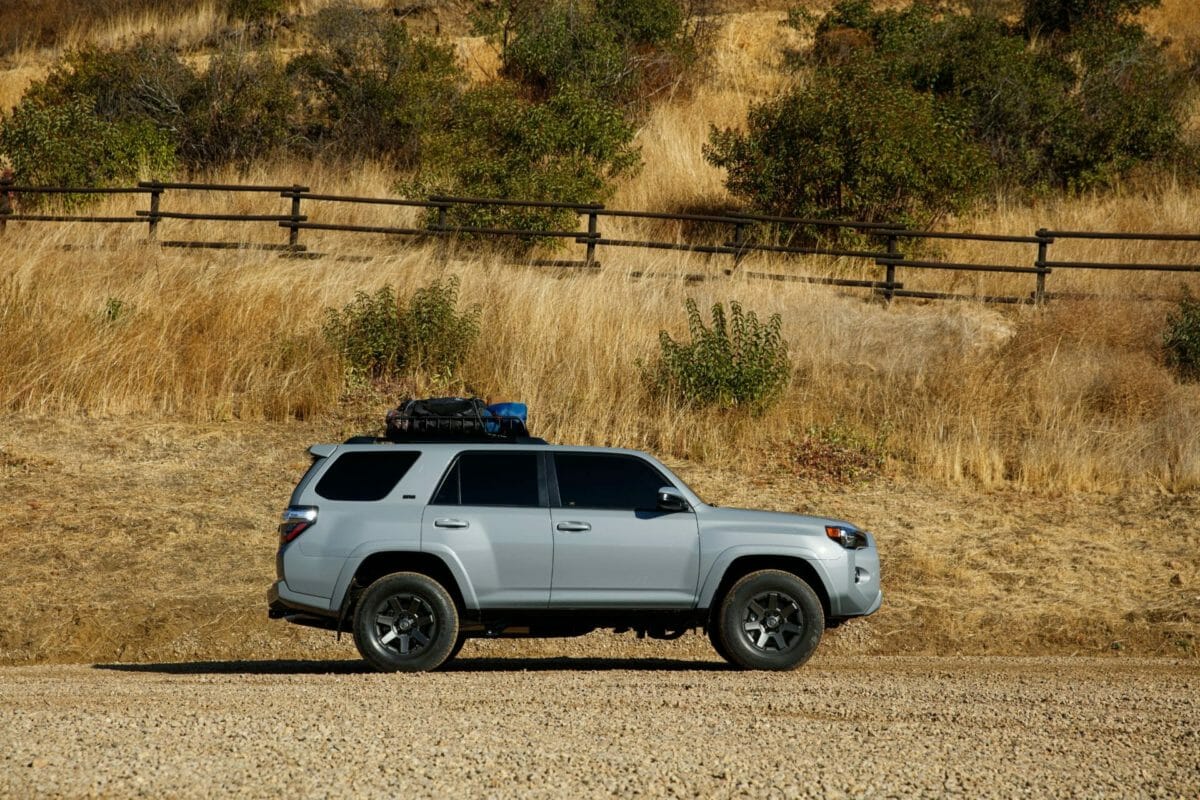
Best 4Runner Model Year to Buy
As always, the best Toyota 4Runner is the one that fits your needs. If you are looking for a fun off-roader that you do not plan on daily driving or hauling your family around in, the first- or second-generation would be the best. Specifically, for off-roading would be the 1984 model year — however, it may not offer enough power because it only produced about 100 hp.
The 1984 model year is best because these vehicles have the gear-driven transfer case, solid front axle, and the most reliable engine offered. (The 1985 MY offers similar specs.) If the 1984-1985 model years are too rich for your blood, any other year for the first- or second-generation should get the job done.
However, note that the V6 has some serious reliability issues. Also, all years are unsafe and prone to rust.
If you are looking for the perfect family-hauler, the fifth generation is the model of choice. It is hands-down the safest 4Runner and the most reliable.
However, the best model years for the fifth generation are 2017-Present.
If they are too expensive for your budget, the 2010-2013 model years should do the trick. By now, they have all had their airbags replaced and are fairly safe. If that is still too expensive the 2008-2009 model year 4Runner might be the sweet spot for your needs.
Worst 4Runner to Buy
Although the third- and fourth-generation 4Runners (1996-2007) looked good on paper, they weren’t so great in practice. To their credit, they were much safer than the previous generations and were still off-road capable.
However, the glaring problem with both generations is their rust issues. Sure, they can be picked up for relatively cheap, however, you are paying for what you get. For every model year, the greatest complaint was rust damage and head gasket failure.
These are two very costly fixes, so it is best they are avoided. Only the 2008-2009 model years seem to not be affected by rust, however, this may be because they are the newest of their generation.
Photos: Toyota
